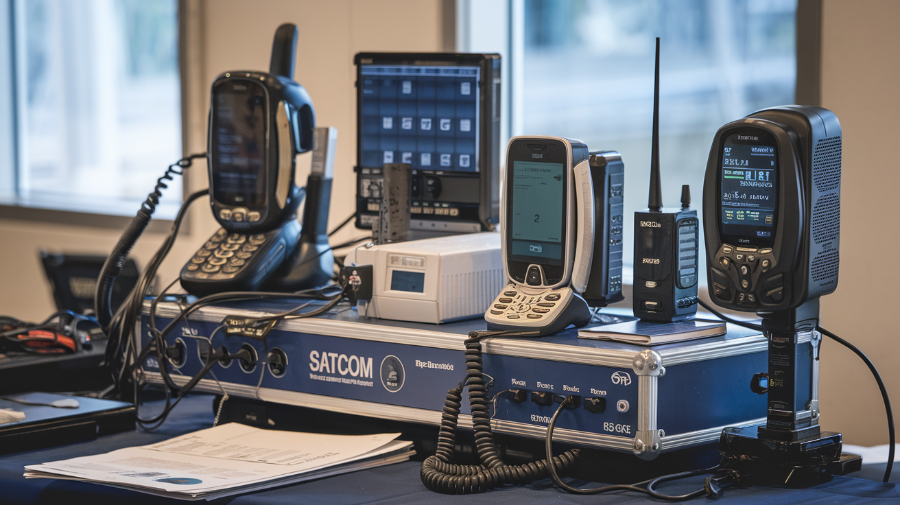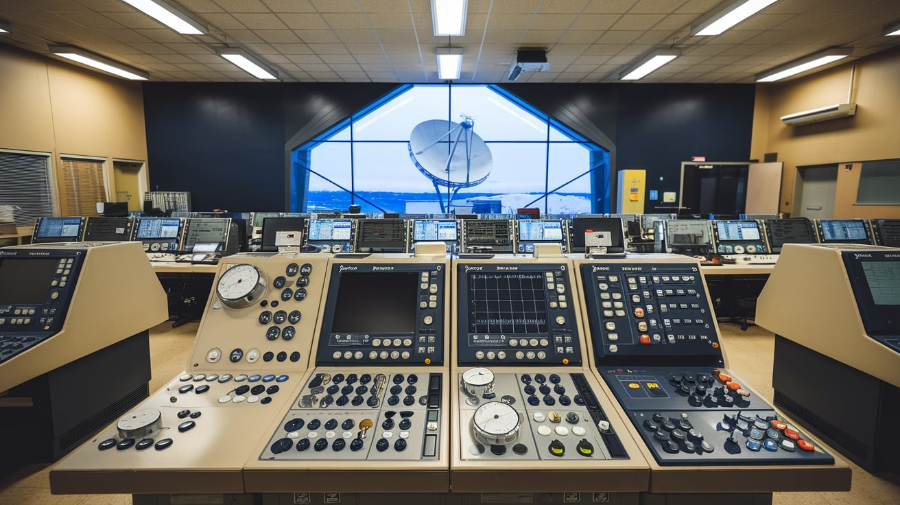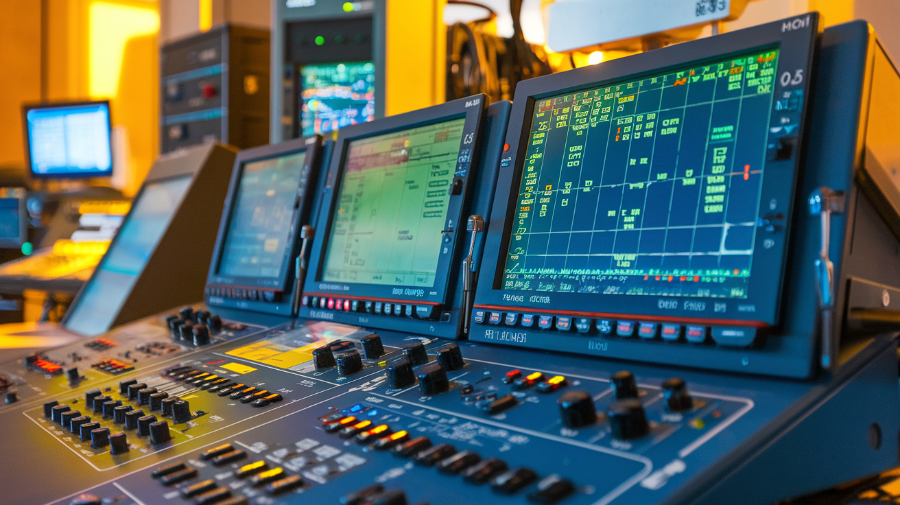The SATCOM Terminal Market is experiencing significant growth, driven by rising demand for secure and high-speed communication systems across military, commercial, and government sectors. The increasing reliance on satellite communication for real-time data transmission, surveillance, and remote connectivity is fueling the market’s expansion. The adoption of advanced SATCOM terminals in airborne, naval, and land-based applications is transforming industries by enabling seamless communication in remote and challenging environments.
The demand for SATCOM terminals is being driven by an increasing need for high-bandwidth, secure communication for defense operations, commercial aviation, maritime applications, and disaster response. As global connectivity becomes a priority, investments in next-generation SATCOM solutions continue to rise. Technological advancements, such as software-defined radios (SDRs), electronically steered antennas (ESAs), and high-throughput satellites (HTS), are reshaping the industry by providing enhanced data transmission capabilities, lower latency, and higher reliability.
With geopolitical tensions rising and the need for uninterrupted global communication increasing, governments and defense organizations are heavily investing in secure SATCOM networks. The market is also witnessing significant developments in commercial satellite communication, particularly with the expansion of broadband internet services, autonomous transportation systems, and remote monitoring solutions.
Download Pdf Brochure: https://www.marketsandmarkets.com/pdfdownloadNew.asp?id=159285646

Market Drivers: Increasing Demand for Secure and Reliable Communication
The SATCOM Terminal Market is growing due to the rising need for uninterrupted connectivity across military and commercial sectors. In military operations, SATCOM terminals play a crucial role in ensuring real-time intelligence gathering, secure data transmission, and tactical communication in remote battlefields. Armed forces rely on high-bandwidth SATCOM solutions for command and control operations, reconnaissance missions, and unmanned system coordination.
In the commercial sector, SATCOM terminals are driving broadband expansion, maritime communication, and in-flight connectivity. The aviation industry is leveraging satellite-based internet services to provide seamless connectivity to passengers and crew members. Airlines are integrating advanced SATCOM systems to improve air traffic management, flight tracking, and operational efficiency.
The maritime industry is another major contributor to the SATCOM Terminal Market, as vessels require continuous connectivity for navigation, fleet management, and safety applications. With the rise of autonomous shipping and smart port technologies, high-speed SATCOM networks are becoming indispensable for real-time data exchange between vessels and command centers.
Technological Advancements Transforming the SATCOM Terminal Market
The SATCOM Terminal Market is evolving with innovations in antenna technology, modulation techniques, and satellite architecture. One of the most significant advancements is the adoption of electronically steered antennas (ESAs), which offer higher efficiency, faster beam switching, and improved connectivity in dynamic environments. These antennas are particularly beneficial for airborne and maritime applications, where stable communication is required despite constant movement.
The introduction of software-defined radios (SDRs) has revolutionized SATCOM terminals by enabling greater flexibility, multi-band operation, and software-based reconfiguration. These systems allow users to switch between different frequency bands and communication standards, making them highly adaptable to evolving mission requirements.
Another key innovation driving market growth is the deployment of high-throughput satellites (HTS), which significantly increase data transmission capacity and reduce per-bit costs. HTS systems enable faster and more reliable connectivity, making them ideal for broadband internet, defense communication, and IoT applications.
With the growing demand for secure and resilient communication networks, anti-jamming, encryption, and cyber-defense technologies are being integrated into military SATCOM terminals. Governments and defense agencies are prioritizing hardened communication systems that can withstand cyber threats and electronic warfare.

COVID-19 Impact on the SATCOM Terminal Market
The COVID-19 pandemic had a significant impact on the SATCOM Terminal Market, initially causing supply chain disruptions, production delays, and reduced defense spending. However, the pandemic also highlighted the importance of satellite-based communication for remote operations, telemedicine, and emergency response. The increasing need for connectivity in rural and underserved regions led to accelerated investments in satellite broadband networks.
Governments and private enterprises ramped up efforts to deploy SATCOM solutions for disaster recovery, remote education, and business continuity during lockdowns. As a result, the market witnessed a surge in demand for portable and mobile SATCOM terminals, particularly in sectors such as defense, healthcare, and energy.
Post-pandemic, the market has rebounded, with strong demand for next-generation SATCOM terminals that offer higher data rates, improved security, and multi-orbit capabilities. The growing investments in low-Earth orbit (LEO) satellite constellations are further accelerating market growth by providing low-latency, high-speed connectivity worldwide.
Regional Market Trends and Growth Prospects
North America is expected to dominate the SATCOM Terminal Market, driven by high defense spending, technological advancements, and strong commercial satellite communication infrastructure. The presence of leading SATCOM manufacturers and government initiatives for space-based communication systems contribute to the region’s market leadership. The U.S. military is a key consumer of advanced SATCOM solutions, with ongoing investments in protected tactical SATCOM (PTS), space-based ISR, and airborne communication networks.
Europe is witnessing significant growth due to rising demand for military SATCOM solutions, commercial broadband expansion, and space exploration initiatives. The European Space Agency (ESA) and private sector players are actively investing in high-speed satellite communication networks for aviation, maritime, and emergency response applications.
The Asia-Pacific region is experiencing rapid growth in the SATCOM Terminal Market, fueled by expanding defense budgets, increasing commercial space activities, and growing demand for satellite-based internet services. Countries such as China, India, and Japan are investing heavily in satellite communication infrastructure to enhance military capabilities, disaster management, and rural connectivity.
The Middle East, Africa, and Latin America are also emerging as key markets, driven by government-led initiatives to improve connectivity, support defense modernization, and enhance oil & gas sector communication. The deployment of satellite-based broadband services in remote regions is expected to further boost market demand.
Ask For Sample Report: https://www.marketsandmarkets.com/requestsampleNew.asp?id=159285646

Future Outlook of the SATCOM Terminal Market
The SATCOM Terminal Market is set for continued expansion, driven by technological advancements, increasing defense applications, and growing commercial demand for satellite connectivity. The rise of low-Earth orbit (LEO) satellite constellations, artificial intelligence (AI)-powered network optimization, and quantum encryption will play a pivotal role in shaping the future of the industry.
The development of multi-orbit SATCOM terminals, capable of seamlessly switching between geostationary (GEO), medium-Earth orbit (MEO), and low-Earth orbit (LEO) satellites, will revolutionize global connectivity. These advancements will enable more efficient, secure, and cost-effective communication solutions for military, commercial, and government applications.
The SATCOM Terminal Market will continue to evolve with increasing adoption in smart cities, connected vehicles, autonomous systems, and next-generation aerospace platforms. As investment in satellite communication infrastructure accelerates, the demand for advanced SATCOM terminals will remain strong, shaping the future of global communication networks.
